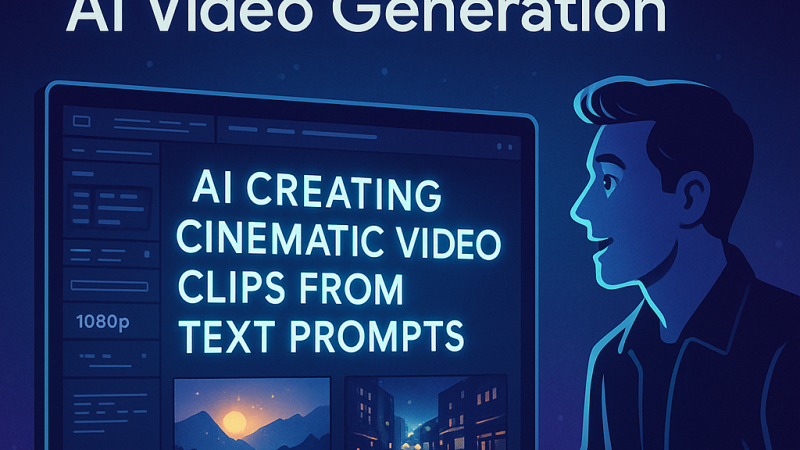Web Design Psychology: Persuading Users with Design
In the fast-paced digital world, web design plays a crucial role in capturing and retaining users’ attention. The art of persuasive web design goes beyond aesthetics, as it delves into the realm of psychology. Checking on web design by Texas Web Design near San Antonio can make you understand more. By understanding the psychological impact of web design, businesses can effectively engage users and drive them towards desired actions.
Understanding the Psychological Impact of Web Design
Humans are inherently visual beings, and our brains are wired to process visual information rapidly. When it comes to web design, this means that the visual elements on a website can have a profound impact on user perception and behavior. By leveraging this understanding, designers can strategically use various techniques to influence user actions.
The Role of Visual Hierarchy
Visual hierarchy refers to the arrangement of elements on a web page to guide users’ attention. By utilizing principles such as size, color, and contrast, designers can direct users’ focus toward specific elements. For example, using larger fonts, bold colors, and prominent placement for call-to-action buttons can draw users’ attention and prompt them to take action. By creating a clear visual hierarchy, designers can effectively communicate the most important information and guide users through the desired user journey.
Color Psychology in Web Design
Colors evoke emotions and have a significant impact on user perception. Different colors can elicit various psychological responses, and understanding color psychology can help designers create the desired emotional experience. For example, using warm colors like red and orange can generate a sense of urgency and excitement, while cool colors like blue and green can convey a feeling of trust and relaxation. By strategically selecting colors that align with the brand’s message and objectives, designers’ can influence users’ emotions and enhance their overall experience.
Typography and Readability
Typography plays a crucial role in web design, as it affects not only the readability of the content but also the overall aesthetic appeal. Different fonts evoke different emotions, and the right typography can convey the brand’s personality and tone. Additionally, the readability of the text is essential for user engagement. By choosing legible fonts, appropriate font sizes, and proper line spacing, designers can ensure that users can easily consume the information on the website. Well-designed typography enhances the user experience and increases the chances of users staying on the site longer.
Creating a Sense of Urgency and Scarcity
The fear of missing out (FOMO) is a powerful psychological motivator. By creating a sense of urgency and scarcity, designers can tap into this fear and encourage users to take immediate action. Techniques such as countdown timers, limited-time offers, and limited stock indicators can create a sense of urgency and drive users to purchase or sign up for a service. By leveraging the psychological principle of scarcity, designers can effectively persuade users and increase conversions.
Importance Of Hiring A Web Designer In Web Design Psychology
Create a Website That Builds Trust And Credibility
Research has shown that users form an opinion about a website within milliseconds of landing on it. A professional web designer knows how to use colors, fonts, and layouts to create a visually appealing and trustworthy website. By incorporating elements such as testimonials, certifications, and security badges, they can instill confidence in visitors and increase the likelihood of them staying on the site and taking desired actions
Enhancing The User Experience
A website that is easy to navigate, with clear call-to-action buttons and intuitive menus, ensures that users can quickly find what they are looking for. By understanding how users scan and process information, a web designer can strategically place important elements and optimize the layout for maximum usability. This not only improves user satisfaction but also reduces bounce rates and increases the chances of conversion.
Use Of Persuasive Techniques
By understanding the principles of persuasion, a web designer can create a website that effectively influences user behavior. From using persuasive copywriting techniques to employing social proof and scarcity tactics, a well-designed website can guide users toward desired actions, such as making a purchase or signing up for a newsletter.
Enhancing your website’s overall effectiveness
By seeking assistance from experts in this field, you can gain valuable insights into how to create a visually appealing and user-friendly website that resonates with your target audience. These experts can guide you on various aspects, such as color psychology, typography, layout, and user interface design, to ensure that your website effectively communicates your brand message and engages users. By understanding the psychological principles behind web design, you can create a website that looks aesthetically pleasing, drives conversions, and achieves your business goals.
Overall, while it may be tempting to use DIY website builders or pre-made templates, the importance of hiring a web designer who understands web design psychology cannot be ignored. By incorporating psychological principles into the design process, a professional web designer can create a website that not only looks visually appealing but also engages and influences users positively.






